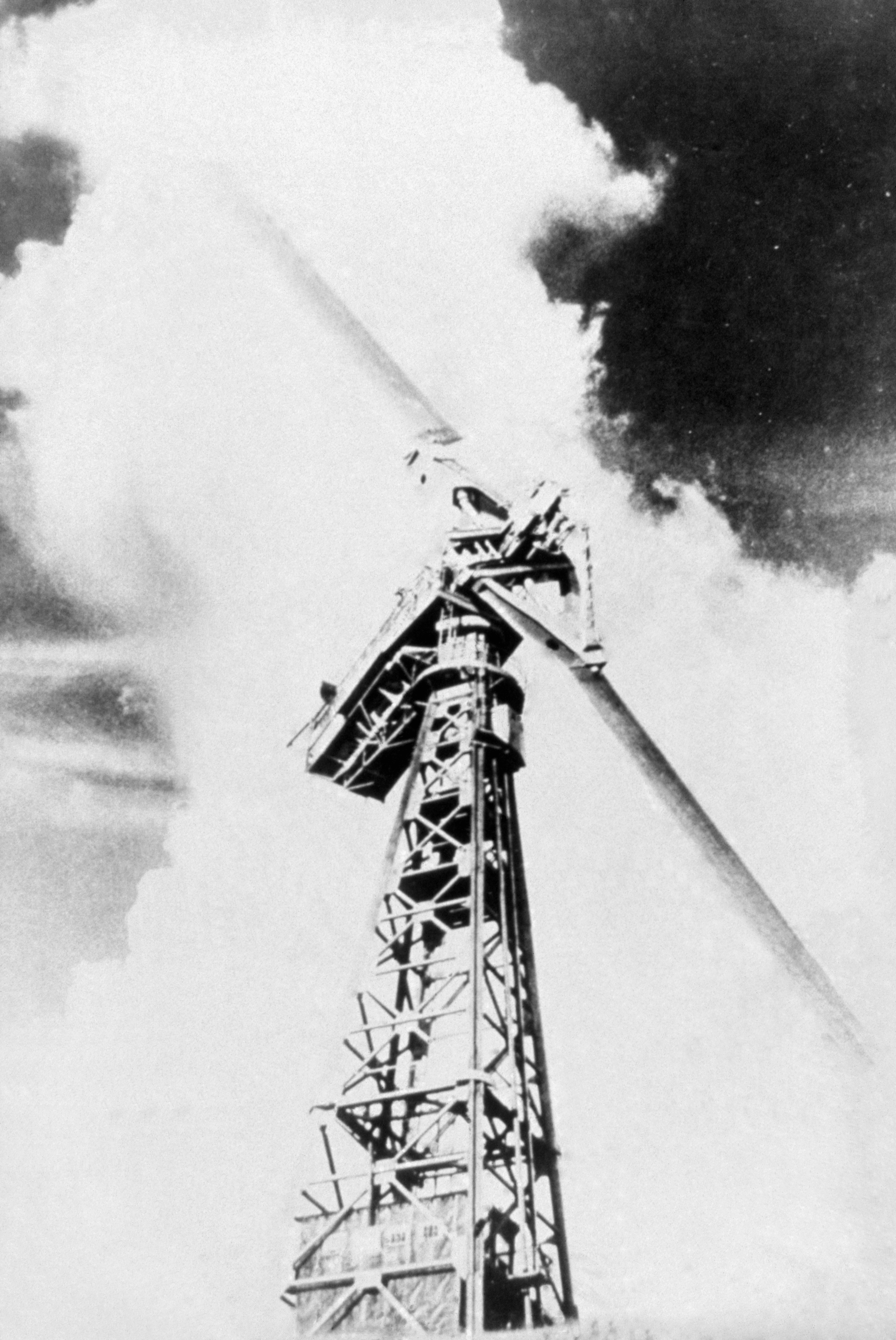|
Smith–Putnam Wind Turbine
The Smith–Putnam wind turbine was the world's first megawatt-size wind turbine. In 1941 it was connected to the local electrical distribution system on Grandpa's Knob in Castleton, Vermont, US. It was designed by Palmer Cosslett Putnam and manufactured by the S. Morgan Smith Company. The 1.25 MW turbine operated for 1100 hours before a blade failed at a known weak point, which had not been reinforced due to wartime material shortages. It would be the largest wind turbine ever built until 1979. Description The turbine had two blades, in diameter, on the down-wind side of a -foot steel lattice tower. Each blade was approximately wide and long, and weighed eight tons. The blades were built on steel spars and covered with a stainless steel skin. The blade spars were hinged at their root attachment to the hub, allowing them to assume a slight cone shape. The generator was a 1250 kva 600 RPM synchronous generator made by General Electric, producing 2,400 V at 60 cycles ... [...More Info...] [...Related Items...] OR: [Wikipedia] [Google] [Baidu] |
Wind Turbine 1941
Wind is the natural movement of air or other gases relative to a planet's surface. Winds occur on a range of scales, from thunderstorm flows lasting tens of minutes, to local breezes generated by heating of land surfaces and lasting a few hours, to global winds resulting from the difference in absorption of solar energy between the climate zones on Earth. The two main causes of large-scale atmospheric circulation are the differential heating between the equator and the poles, and the rotation of the planet (Coriolis effect). Within the tropics and subtropics, thermal low circulations over terrain and high plateaus can drive monsoon circulations. In coastal areas the sea breeze/land breeze cycle can define local winds; in areas that have variable terrain, mountain and valley breezes can prevail. Winds are commonly classified by their spatial scale, their speed and direction, the forces that cause them, the regions in which they occur, and their effect. Winds have various aspe ... [...More Info...] [...Related Items...] OR: [Wikipedia] [Google] [Baidu] |

